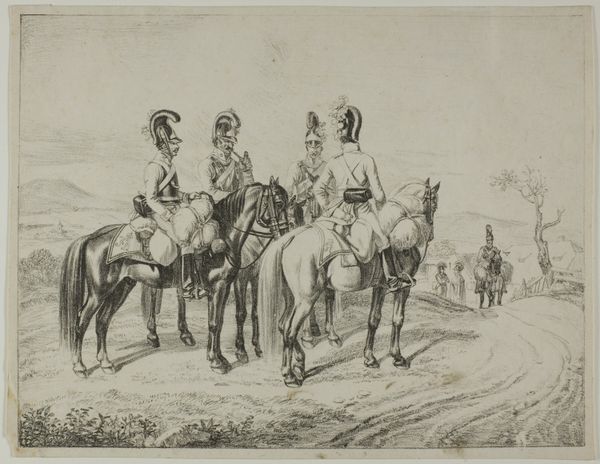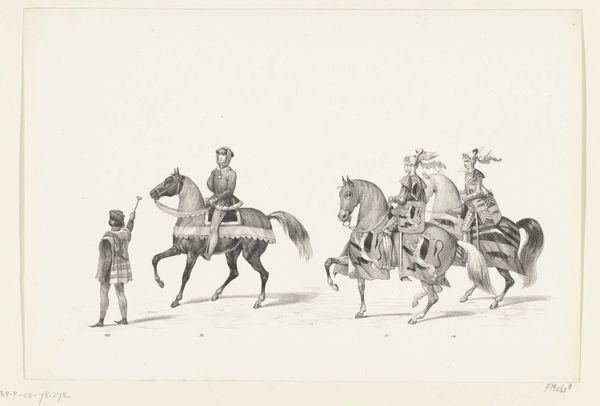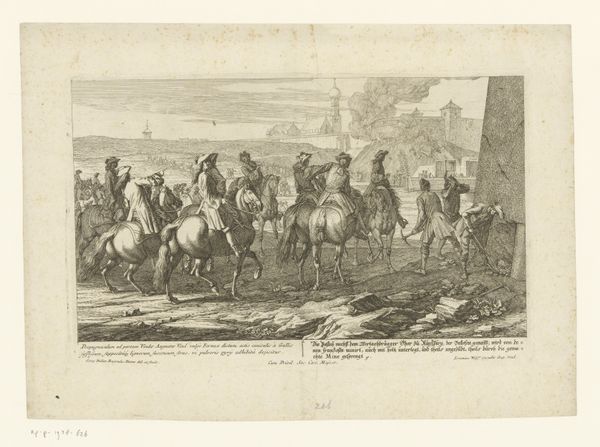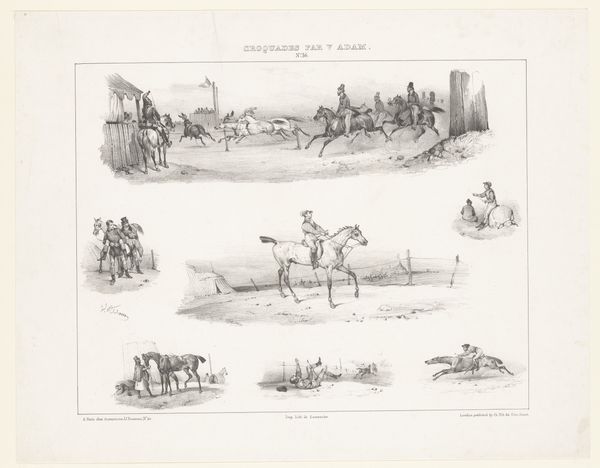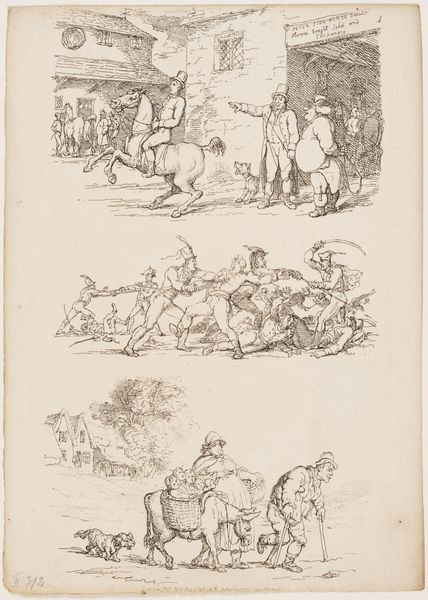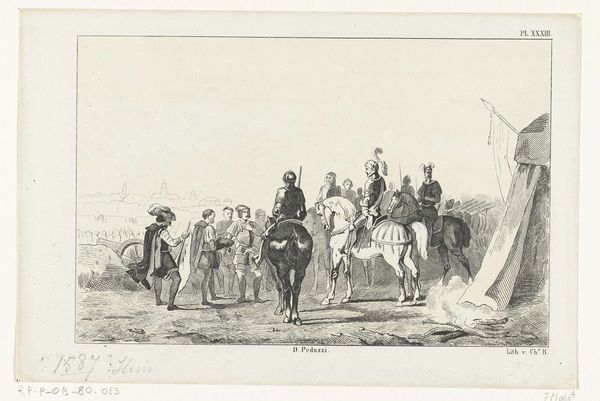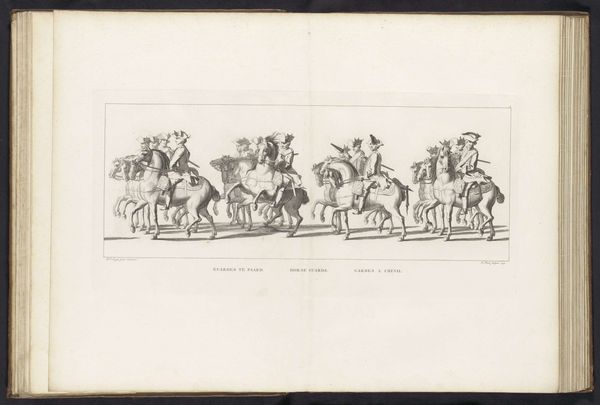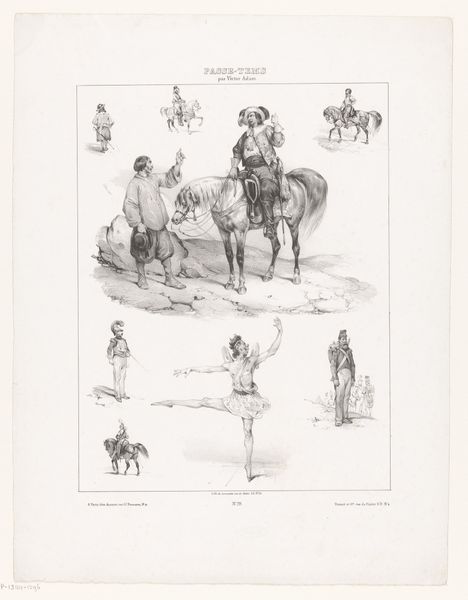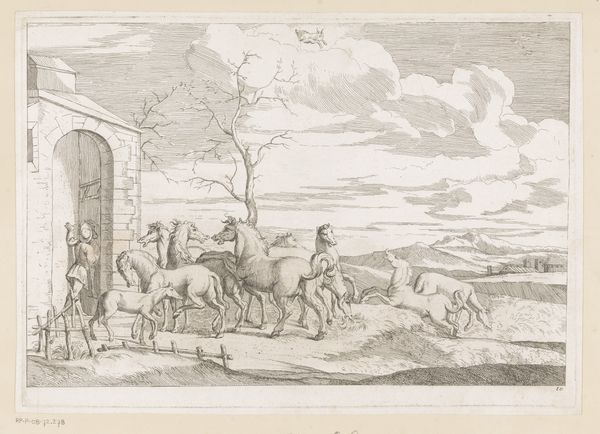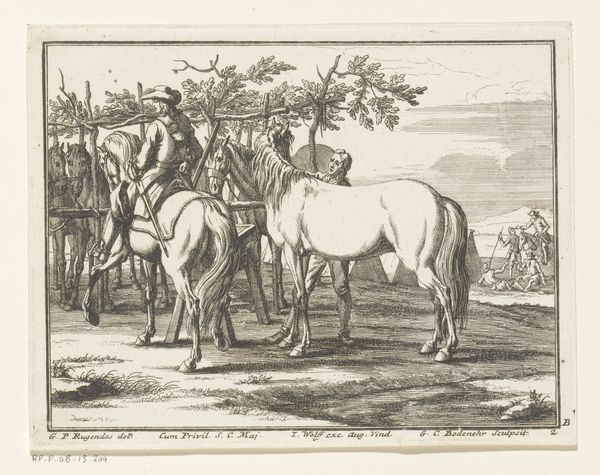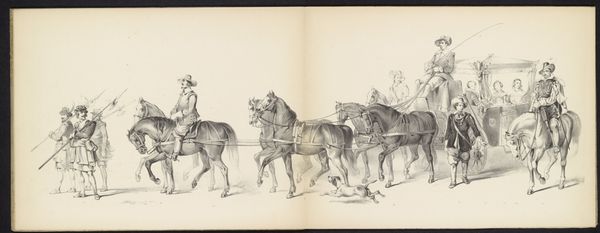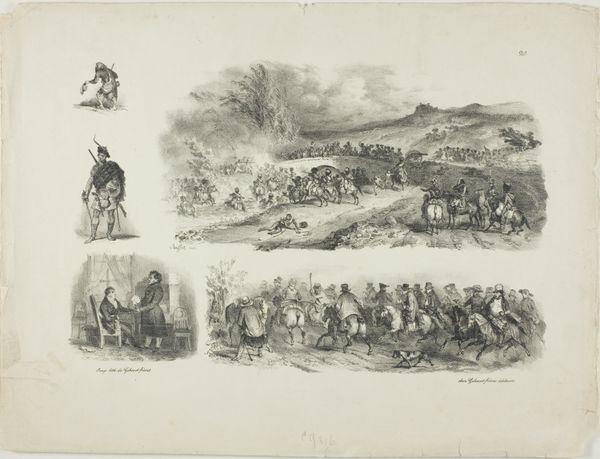
Schetsblad met diverse studies, onder andere van paardensport 1848 - 1927
0:00
0:00
drawing, paper, pencil
#
drawing
#
comic strip sketch
#
imaginative character sketch
#
quirky sketch
#
narrative-art
#
landscape
#
figuration
#
paper
#
form
#
personal sketchbook
#
sketchwork
#
ink drawing experimentation
#
pen-ink sketch
#
pencil
#
line
#
sketchbook drawing
#
genre-painting
#
storyboard and sketchbook work
#
academic-art
#
sketchbook art
#
realism
Dimensions: height 385 mm, width 559 mm
Copyright: Rijks Museum: Open Domain
Curator: What a lively sheet! I'm struck by the delicate pencil work; there's a real lightness to it. Editor: Indeed. What we're looking at is "Schetsblad met diverse studies, onder andere van paardensport," or "Sketch sheet with various studies, including equestrian sports," by August Allebé, dating roughly from 1848 to 1927. It resides here in the Rijksmuseum. Curator: It really captures a specific kind of leisure and power dynamics, doesn't it? All those horseback riders, rendered with such attention to detail, from the ladies' billowing skirts to the postures of the men in command. There's a definite social hierarchy on display here. Editor: Absolutely. The horse, of course, becomes a potent symbol of status and control in the nineteenth century. These images of equestrian pursuits need to be seen against a backdrop of evolving social structures. How were women participating in shaping narratives of power? Was this empowering to them? The way Allebé captured details like the folds of their clothing and the postures they assumed becomes really significant. Curator: I also noticed a group of uniformed figures that appear to be military or civic personnel in one corner; It speaks to institutional power and societal expectations, maybe reflecting Allebé's personal views. The image suggests a particular class consciousness—the artist positions these displays of societal order alongside private moments like the couple sitting in a garden setting below. Editor: Considering the socio-political landscape of that era, I'd say Allebé's compositions may also indirectly examine Dutch colonial ambitions, considering that it was right about at its peak, especially the relationship to image-making, visibility, and national identity. How might we decode those power dynamics within the confines of the art world? Curator: So much contained in a single sheet! I think this sketch highlights the intersection of art, leisure, and prevailing power structures in 19th century Holland. Editor: It's really rewarding when an artwork reveals such intricate interplay. The study acts as a starting point for bigger inquiries, which is often its ultimate purpose.
Comments
No comments
Be the first to comment and join the conversation on the ultimate creative platform.
